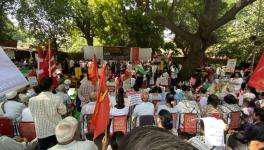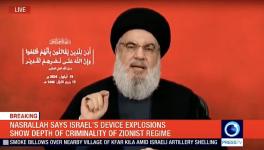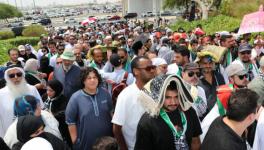Iran US Nuclear Agreement: A Historic Breakthrough or Iran's Capitulation?
There is little doubt that the Iran US nuclear agreement reached in Vienna on 14th July is an important milestone in the troubled history of Iran US relations. It breaks the ever escalating sanctions regime that the US and its allies were imposing on Iran and Iran's response: stepping up its nuclear fuel enrichment program. Peace and diplomacy have been given a chance, even though the path towards peace remains rocky. The Republicans have promised to wreck peace process in the Congress and they have a majority in both the houses. Hilary Clinton, the front-runner for the Democrats in the 2016 presidential elections, is a pro-Israel hawk and may also not have too much use for Obama's legacy – peace with Iran – after he lays down office.
Though officially, the agreement has been negotiated between Iran and the P5+1 (the Security Council Permanent 5 + Germany), the actual negotiations have been always between the US and Iran, the two sides.
The Vienna agreement promises to lift economic sanctions in lieu of Iran dismantling a part of its nuclear infrastructure. The US has also conceded Iran's right to enrich nuclear fuel, something it had rejected till now. The catch is that Iran has accepted that lifting of economic sanctions will take place only after it rolls back its nuclear fuel enrichment program, raising the possibility of US delaying this vital step under various pretexts. Iran has also conceded that the IAEA inspections will extend to military installations, with the danger of the US using such IAEA inspections for spying missions, as it did earlier in Iraq.

Image Courtesy: en.wikipedia.org
After the fall of the US ally and client, the Shah and his kleptocratic, bloody regime, the US has waged a virtual war on Iran in different ways. The first was its backing Saddam Hussain in his war on Iran, including supplying Saddam with chemical weapons and helping him in battlefield use of such weapons. The second was imposing economic and military sanctions on Iran, almost right after Shah's fall, expanding them later into UN sanctions. This was followed by cyber attacks on the Natanz nuclear fuel complex and Iran's oil infrastructure. The US has also supported various terrorist organisations in Iran such as Jundalla, Mujahadeen e Khalq (MEK) and has even carried out assassinations of Iranian nuclear scientists on Iranian soil. All this while, the US has claimed that Iran supports “terrorism” in the region and is destabilising other governments. This from a government that essentially birthed al Qaeda in Afghanistan, invaded Iraq, destroyed the Libyan state and is today very much in alliance with the al Qaeda affiliate Jubahat al Nusra against the Syrian government of Bashar al Assad.
The Vienna agreement has fleshed what was a broad framework agreement in Lausanne in April, and identified the sequence of steps that both sides will take. In Lausanne, Iran had agreed to scale back its nuclear fuel enrichment program significantly in lieu of the US and its allies lifting economic and military sanctions. The final 160 page agreement incorporates the sequence – the economic sanctions are to be lifted, but only after the IAEA certifies that Iran has taken all the necessary steps under the agreement to roll back its nuclear program. This is a potential pitfall for Iran, as the IAEA may drag out is certification under its current Director General Amano, who has already shown his loyalty to the US. Sanctions will snap back if Iran is seen to “violate” any of clause in the agreement. The Vienna agreement has also extended the inspection regime beyond what Iran had agreed to in April: it will open any site, including sensitive military installations to inspection, albeit on a case to case basis and under a “controlled access” basis: Iran has the right to challenge such inspection requests.
The Lausanne agreement envisaged Iran reducing the number of centrifuges from 19,000 to about 6,000 -- out of which about 5,000 will be used for fuel enrichment. Iran had also agreed to reduce its inventory of Low Enriched Uranium (3.7% purity) by 98% – from 10,000 kg to only 300 kg -- shipping it out to probably Russia. The Arak heavy water reactor for producing plutonium will be redesigned for research and producing only radio-isotopes for medical purposes. Iran will also not use Fordow facilities for enriching of uranium.
Iran has not only accepted more intrusive inspections by the IAEA under its Additional Protocol, it has also agreed to expand these beyond the protocol -- to what the west calls the entire nuclear supply chain: it will cover the mining and milling of uranium, the production and storage of centrifuges, etc.
The various measures put in place for capping of Iran's nuclear fuel enrichment program will remain in place for the next 10-15 years. This locks in place Iran's nuclear program for at least 10 years, if not 15. Iran can no longer use the threat of its break-out capacity to create a strategic equilibrium in the region. Its conventional military strength remains well below that of its immediate regional competition, the Saudi and other Gulf monarchies, let alone Israel, the 800 lb gorilla in the region.
The agreement does not lift the UN military sanctions on Iran. They will continue for another five years. The separate US military sanctions will continue and Iran will also continue to be frozen out of the US financial system.
The continuation of the military sanctions means that Iran's conventional military strength will continue to be well below its regional competition, particularly Saudi Arabia. While Saudi Arabia and other Gulf monarchies have significantly expanded their military budget and are buying (or have bought) the latest military hardware from the US and other western countries, the bulk of Iranian military equipment continues to be of the Shah vintage. Though Russia has sold some advanced weaponry to Iran, they are almost minuscule compared to the weaponry that the Gulf monarchies possess and are continuing to procure. The only major weapon system that Iran possesses is its indigenously developed ballistic missile system.
How does Iran's military spending compare to other neighbours in the region? In 2014, Iran spent $14 billion on its military budget, the bulk of it going to salaries. Compared to this, the military budget of the Gulf Cooperation Council states – Bahrain, Kuwait, Oman, Saudi Arabia, and the UAE -- was 13 times more. The tiny emirates of UAE alone spent 50% more than the much bigger Iran. It is not that Iran had reduced its military spendings because of sanctions. The data shows that while Iran expanded its military budget, even though at a slower pace, it is Saudi Arabia and other Gulf monarchies that have significantly stepped up their military programs in the last 10 years.
Despite the propaganda in the western media, Iran is not the one threatening its neighbours. It is part of a defensive alliance consisting of Hezbollah in Lebanon, the Syrian government, and now the Iraqi government. Israel has attacked Lebanon and Hezbollah repeatedly with US support. In Syria, the US, Israel, Turkey, Saudi Arabia, other Gulf monarchies and Jordan are in tacit, if not open alliance with various sectarian outfits including al Qaeda affiliates, providing them arms, tactical support and money, along with sanctuary. Israel and the US have repeatedly threatened to bomb Iran's nuclear and military facilities. The Saudis are openly aligning with al Qaeda in Yemen, while attacking the Houthis and the civilian population. It is not Iran that is destabilising the region but the US and its allies. It is they who have supported the most extreme and sectarian form of Islam, the virulent Wahabi version nurtured by the Saudis, which has now morphed into the murderous ISIS and the Islamic Caliphate. It is the US, which plays both sides – using Islamophobia at home to whip support for an increasingly militarised, surveillance state, while aligning with the most regressive sectarian Islamic forces in the region.
It might appear that Iran has capitulated, or given up much more than it has gained in the Vienna agreement. If we take only the strategic aspect of the agreement, it might very well be true. Iran has given up a potent equaliser – its nuclear break-up capability – for lifting of economic sanctions that will depend on the good faith of the US, a commodity that has been in short supply till now.
For Iran, the lifting of economic sanctions has become even more important today. The fall in oil prices have squeezed Iranian economy considerably. Without such a drop, Iran might have found it easier to weather the sanctions regime. Earlier, it was beating the sanctions by offering oil cheaper than international prices and entering into barter deals. However, the US expanding its sanctions to cover foreign banks and other financial institutions, did affect Iran's ability to sell oil, particularly in a falling market.
Iran seems to have been assured that IAEA will be able to verify its compliance by the end of 2015, therefore lifting of sanctions involves only a short wait. It also seems to be confident that the US will live up to its assurances, and if it does not, the current sanctions regime will still be busted as others will not go along with the US.
From the beginning, Iran had made numerous offers to cap its enrichment program. It is the US which had refused to accept that Iran had a right to enrich uranium to any degree. Neither did the US concede to lifting of economic sanctions, which it had imposed on Iran well before the nuclear enrichment imbroglio. Iran therefore can seen to have gained in two ways. It has got an assurance that the economic sanctions will be lifted once it rolls back its fuel enrichment program, and secondly, it has forced the US to accept its right to enrich nuclear fuel.
All things considered, the US Iran agreement is a step forward in reversing the inevitable march of the US towards another war in the region. It will be difficult to restart such a march again, irrespective of who occupies the White House post Obama. Whether Iran will have won lifting of the economic sanctions and how by how much, still remains to be seen.
Those who believe that it will open a new chapter in the US Iran relations are mistaken. The US still considers Iran to be a regional power that needs to be contained. All that it has conceded that war – at least for the time being -- is now off the table as a strategy of containment. The other geo-strategic significance is that it is the first time after the Suez war, that the US has taken a position in the region that has diverged from Israel's.
Disclaiimer: The views expressed here are the author's personal views, and do not necessarily represent the views of Newsclick
Get the latest reports & analysis with people's perspective on Protests, movements & deep analytical videos, discussions of the current affairs in your Telegram app. Subscribe to NewsClick's Telegram channel & get Real-Time updates on stories, as they get published on our website.
























